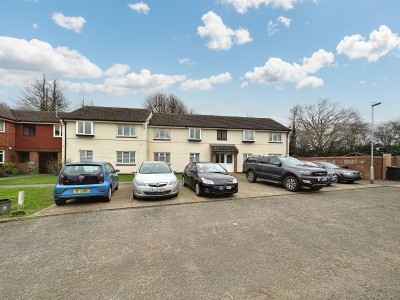A survey conducted by Firechief Global has revealed that 42% of homes in the UK do not have a carbon monoxide alarm fitted, equivalent to over 1 in 3 homes.
Statistics estimate that around 40 people die from accidental carbon monoxide poisoning in England and Wales every year while it also causes 440 major injuries that require hospitalisation and around 4,000 attendances at accident and emergency departments in England alone. Additionally, many experts believe carbon monoxide poisoning is often misdiagnosed and therefore underreported.
Firechief Global’s Managing Director, Laurie Pollard, discusses the importance of having carbon monoxide alarms fitted in your home: “Having carbon monoxide alarms fitted throughout your home is not just an optional safety precaution, it's a lifesaver.
“Carbon monoxide is a silent, invisible threat that can cause serious harm or even death with no pre-warning, unfortunately affecting thousands of people each year.
“Installing these alarms, or making sure your landlord has installed or fixed any broken alarms, will ensure you are alerted to any threat of CO poisoning early on, keeping your family and loved ones safe.”
Regulations around carbon monoxide alarms
In October 2022, the regulations regarding the fitting of carbon monoxide alarms were amended to require CO alarms to be fitted inside rooms where a fixed combustion appliance is installed (including gas boilers and gas fires but excluding gas cookers) in both new builds and rental properties.
It’s down to building regulations bodies and landlords to ensure carbon monoxide alarms are fitted in accordance with the regulations, with landlords also required to replace (or repair) any CO alarm that is faulty or damaged and check its condition before the beginning of a tenancy.
As with smoke alarms, the local housing authority is responsible for enforcing carbon monoxide alarm requirements in the rental sector.
With there being no legal requirement to install CO alarms in existing homes, Laurie calls for the regulations to be amended: “Extending the regulations to include existing homes is a crucial step the government needs to take in protecting everyone from the dangers of carbon monoxide poisoning.
“It’s strongly recommended that homeowners install carbon monoxide alarms, but the data shows that this simply isn’t enough. If we want to ensure the safety and wellbeing of people and families then I believe we need to take this regulation a step further.”
According to the UK government, the estimated cost per additional carbon monoxide alarm including installation would cost £27, with this price expected to decrease over time.
How to fit your carbon monoxide alarm
Laurie Pollard, Managing Director of Firechief Global, explains the steps for fitting a carbon monoxide alarm: “It’s easier and safer to have your carbon monoxide alarm fitted by a professional who can ensure your alarm is compliant with the regulations and installed in all the right locations. However, that doesn’t mean you can’t opt for a DIY installation.
“Most CO alarms today are easy to install, as they’re usually coupled with a simple-to-follow set of manufacturer's instructions.
“Typically, CO alarms should be placed 1-3 metres away from potential carbon monoxide sources and at head height.
“CO alarms should be fitted in rooms where a fixed combustion appliance is present, and if you want to be extra-cautious, you should have a CO alarm near to sleeping areas and at least one CO alarm on every level of your home.
“If you choose to install battery-powered CO alarms, “sealed for life" batteries are recommended over those with replaceable batteries to avoid any tampering with the alarm. For extra safety, choose a mains-powered alarm, with a battery backup. This type of alarm will require installation by a professional electrician.
“You must make sure your CO alarm meets the relevant British Standard – BS 50291-1:2018. Once you have your CO alarms installed, make sure you’re regularly testing and replacing your CO alarm every 5-10 years, or as soon as the battery stops working.”
Best practice for testing your CO alarm
Laurie shares best practices for testing your carbon monoxide alarm: “It’s important to make sure your carbon monoxide alarm is functioning properly by testing it every month. All CO alarms should be manufactured with a test button to press until you hear the alarm sound. This sound confirms that the device is operational and the batteries are working.
“Check that the indicator lights on the alarm are working correctly. This means it will show a green light if it’s functioning normally, while a red light or any kind of audible alarm is likely indicating an issue. Always refer back to the manufacturer's testing instructions as checks can vary from model to model.
“If you have a non-sealed battery-powered CO alarm then you should consider replacing the batteries at least once a year."








